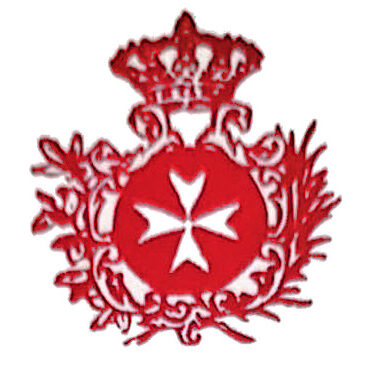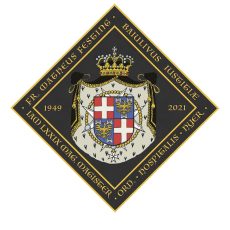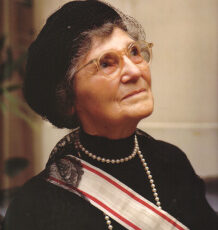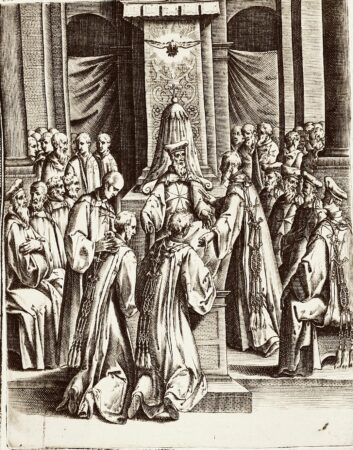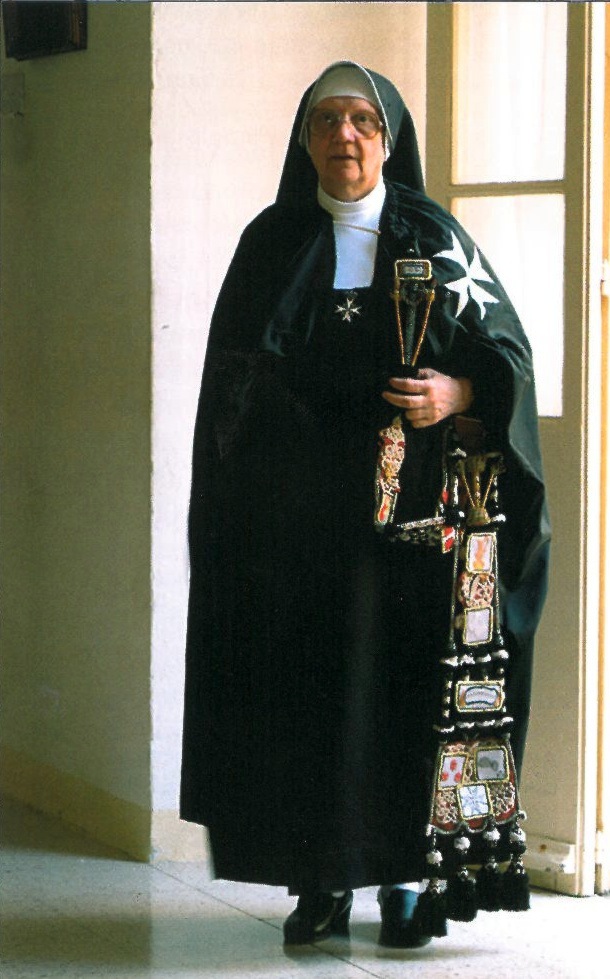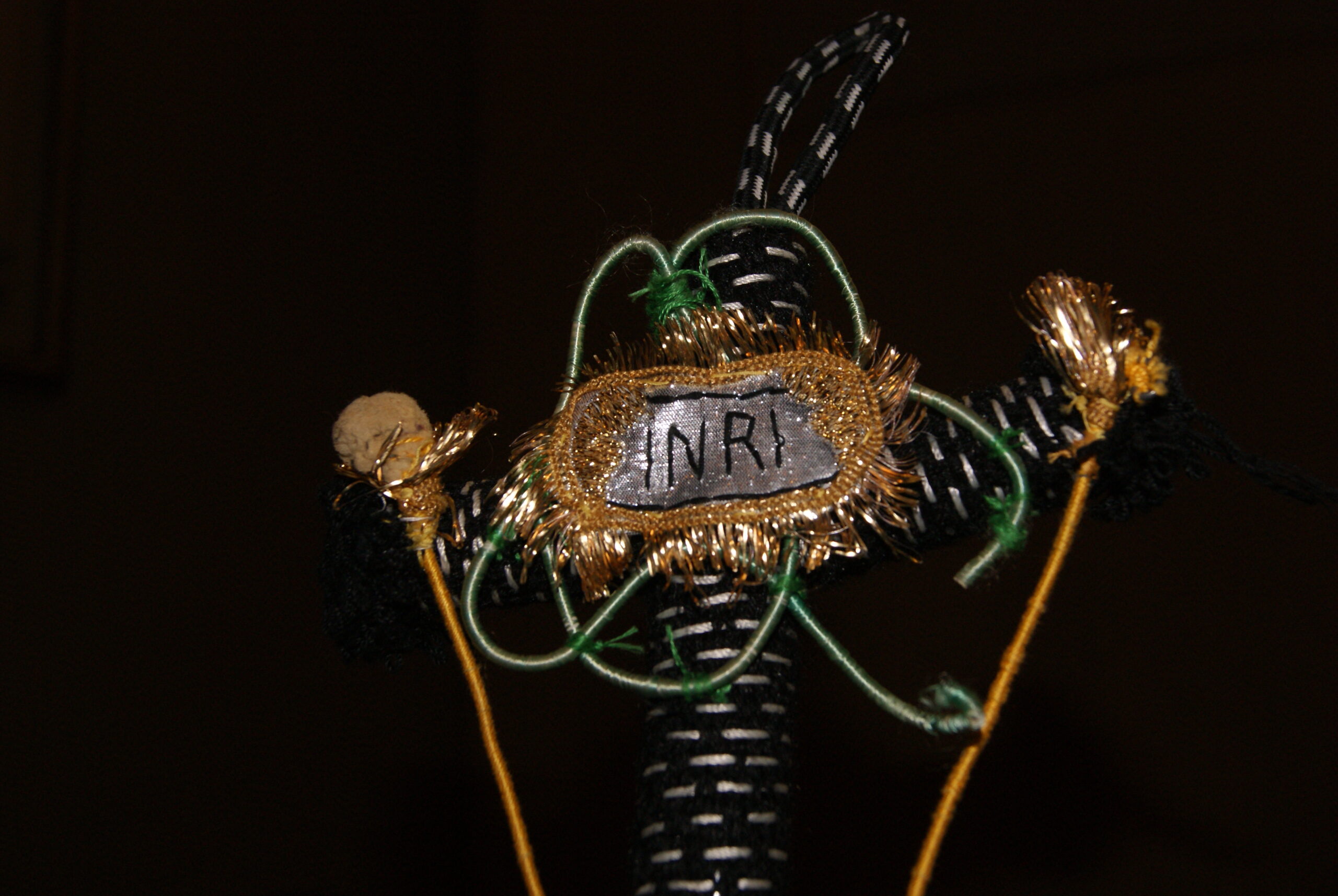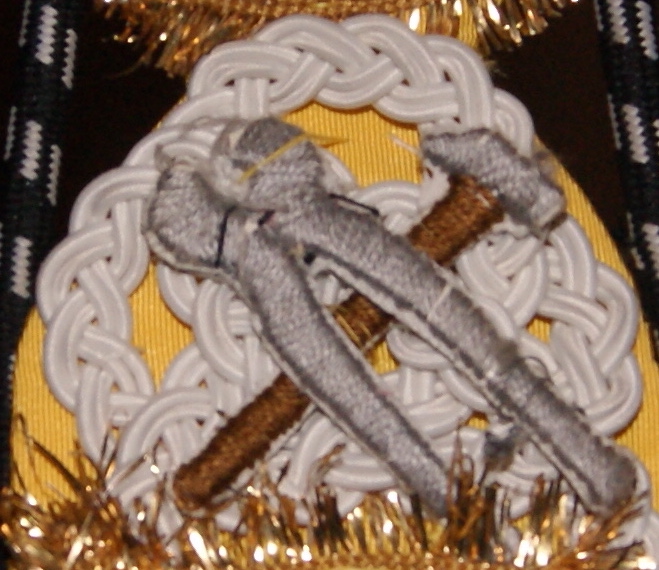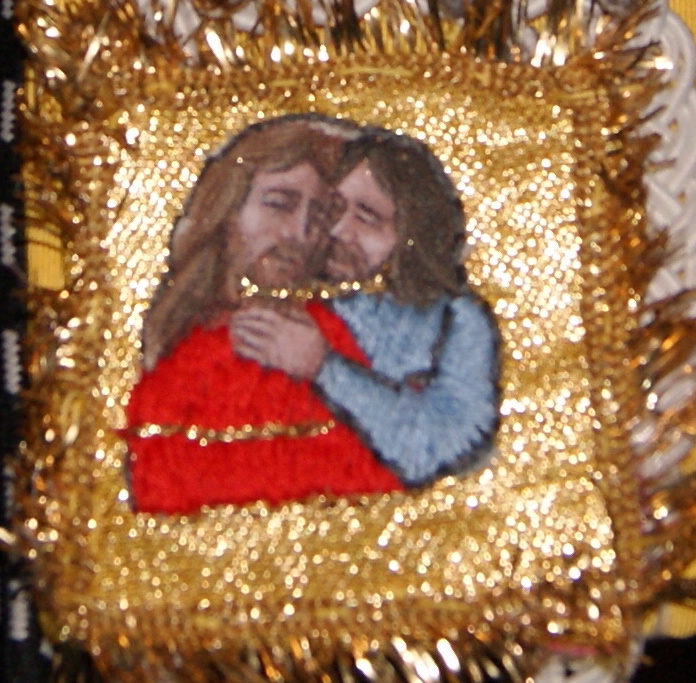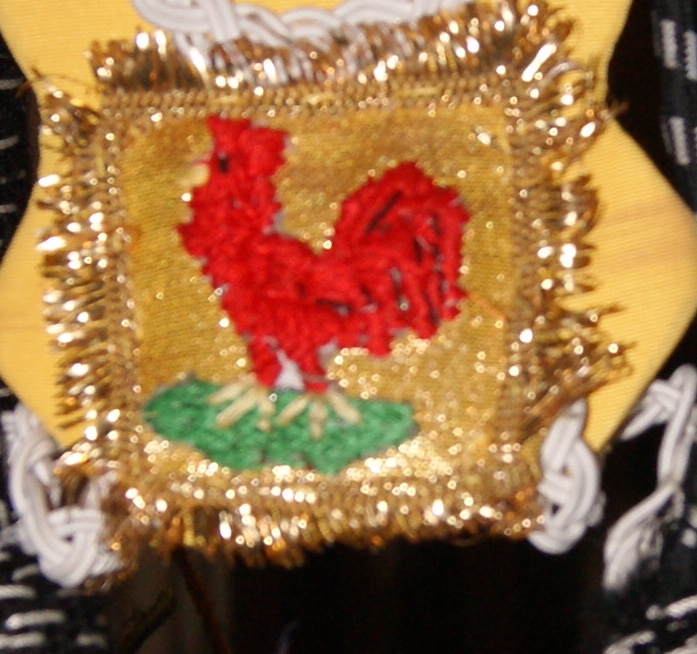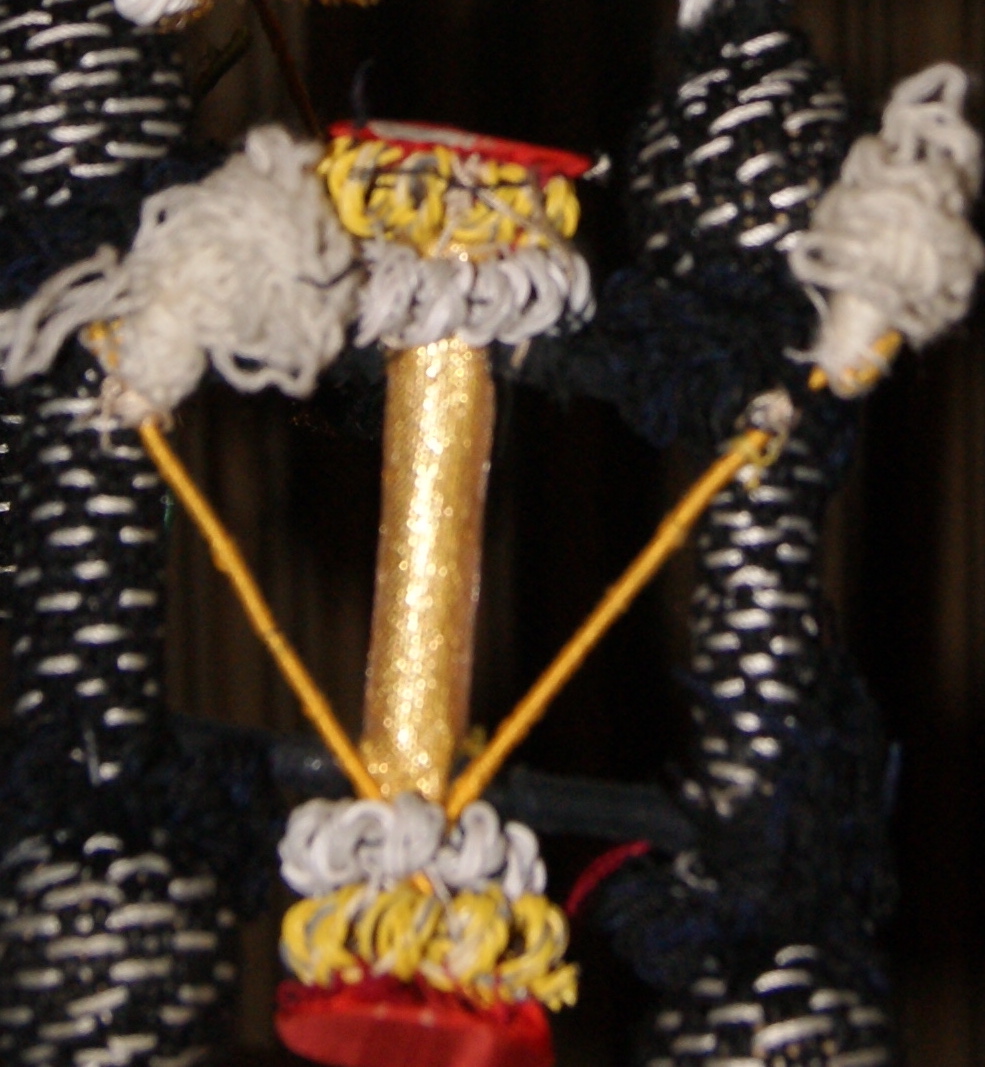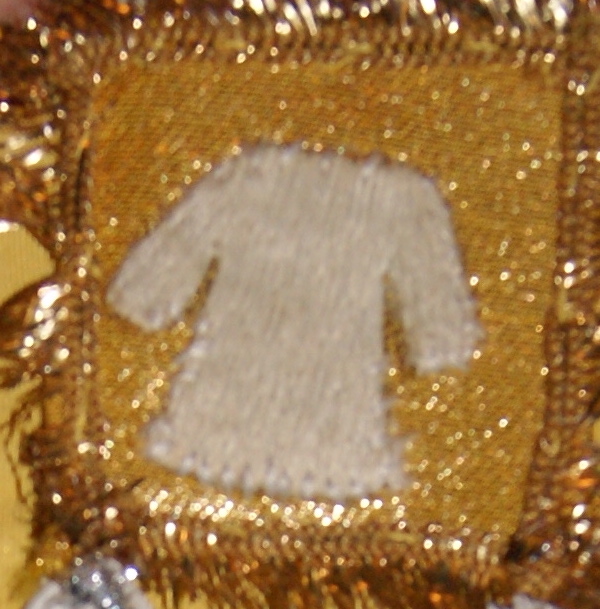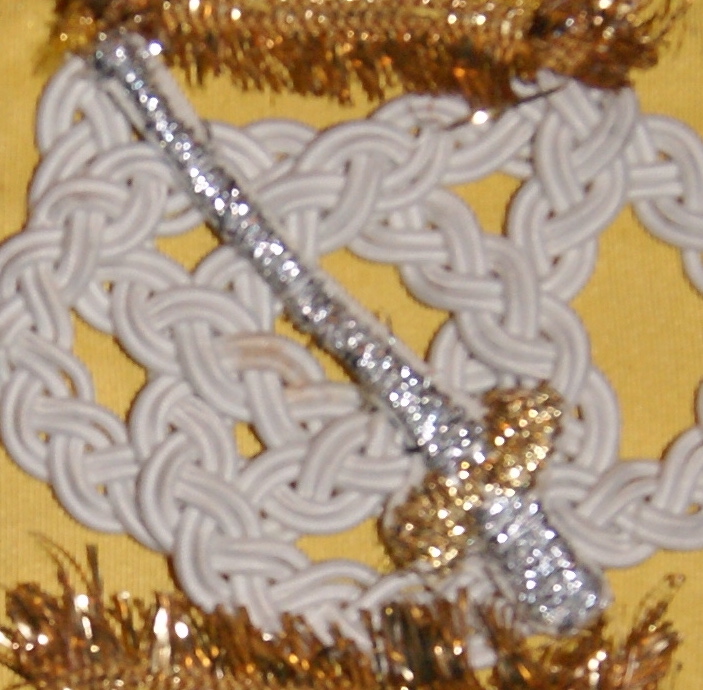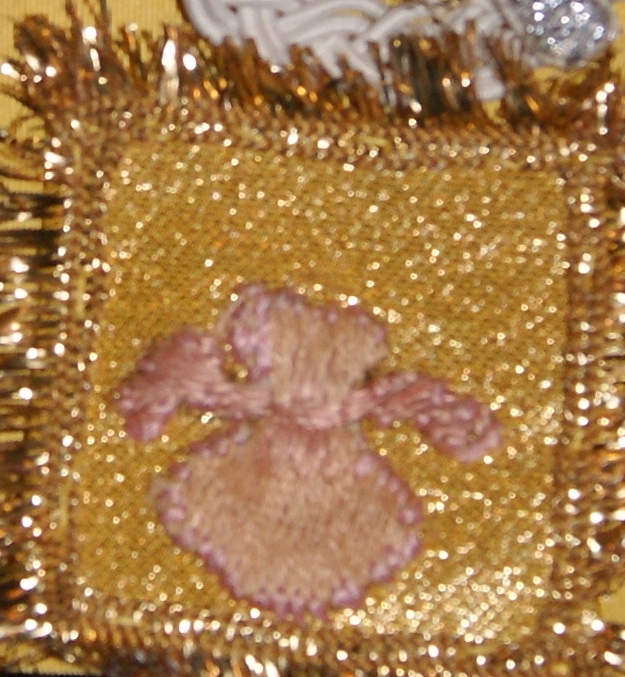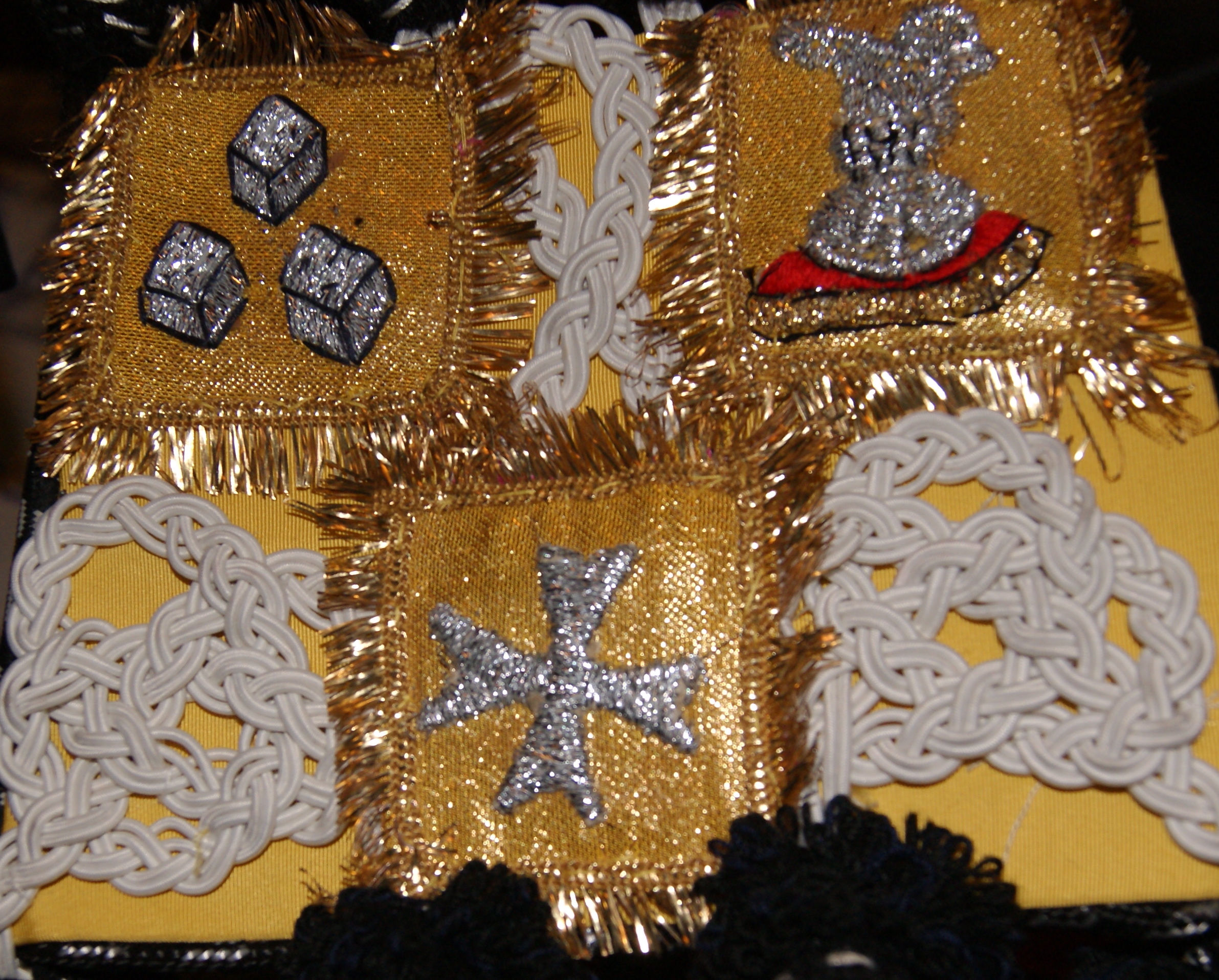One of the distinctive signs of the professed knights of the Order of St. John of Jerusalem is the cord or stola embroidered with the Instruments of the Passion which is worn attached to the neck of the choral dress.
The Ceremonial of Profession, approved by Urban VIII and still in force today, explains that it is imposed on the new religious of the Order as a perennial reminder
of the bitter Passion of our Lord Jesus Christ, who suffered for us on the Cross, reminding you often that this is the Rope with which he was bound; these were the Scourges, with which he was beaten, this is the Column, where he was bound, and bitterly scourged; these were the Dice, and this the Sponge, and finally this is the Cross upon which our Lord Jesus Christ suffered for us, which has to be your guide, and teaches you in all your undertakings, and for all the time of your life.
The cord therefore symbolizes the yoke of Christ (Mt 11,25-30) that “is easy, and light, and will lead you to eternal life, if you are able to tolerate it with that patience, and with that charity, which he expects of you, as a true Religious, and as an honored knight”.
The oldest representation of the cord, with an apparently simpler shape than the current one, is the one that appears in the funeral monument of the Prior of Venice fra’ Bertucci Contarini (who died in 1490) which we can still admire in the Prioral Church of Saint John the Baptist in Venice.
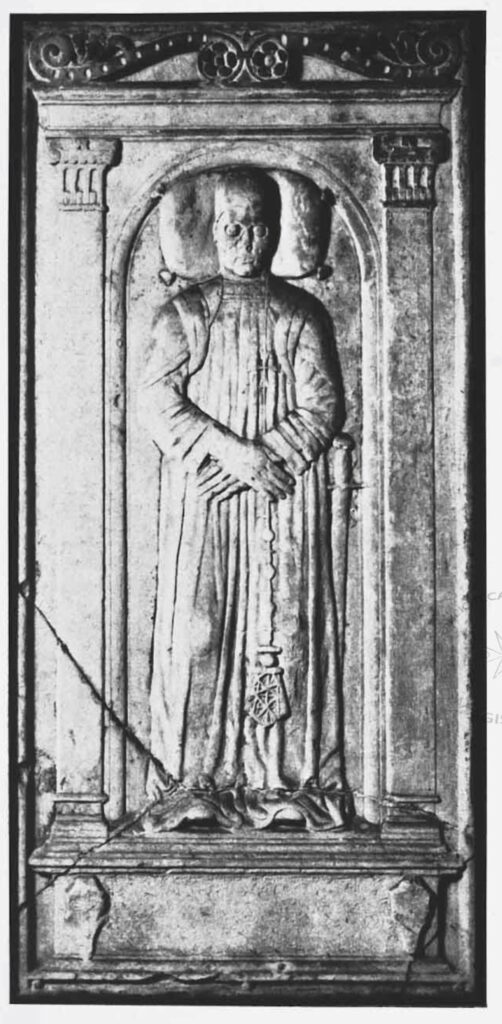
We find it illustrated later in the statutes of 1585, which show that at the time it was left hanging on the back, while today it is resting on the left arm.
It was also brought by the professed nuns of various monasteries of the Order of St. John of Jerusalem and the Prioress of the Monastery of Sant’Orsola in Valletta still uses it today.
The stolon is made up of five pictures. In the upper part we find the Cross with the cartouche bearing the Titulus crucis, the crown of thorns, the reed with the sponge with which the centurion gave Jesus water and vinegar to drink, and the Holy lance with which the Lord’s side was pierced.
Followed by a scroll with the inscription SITIO (I am thirsty), the hammer and the pincers that were used to crucify the Lord and the scene of the kiss with which Judas betrayed him in the Garden of Olives.
In the next scene we find the so-called Veil of Veronica, that is the piece of cloth with which a pious woman wiped the sweat and blood of Jesus along the way to Calvary; and the rooster that with his crowing reminded Peter when the Lord had predicted him at the Last Supper that he would soon deny him.
Then there are the pillar to which Jesus was tied and the scourges with which he was hit.
In the following picture are represented the seamless tunic with which Jesus was clothed; the sword drawn by the disciple in the Garden of Olives; and the purse with the thirty coins paid to Judas for his betrayal.
A cartouche with the legend CONSVMMATVM EST (everything is accomplished) precedes the fifth picture in which we find the dice with which the soldiers played lots for his tunic, the jug with which Pontius Pilate washed his hands and the octagonal cross.
In some representations there also appear a wicker basket, necessary for the friar of the Order of St. John to receive alms; a palm branch symbol of martyrdom; and a hand in remembrance of those that Pilate washed before handing Jesus over to his executioners.
